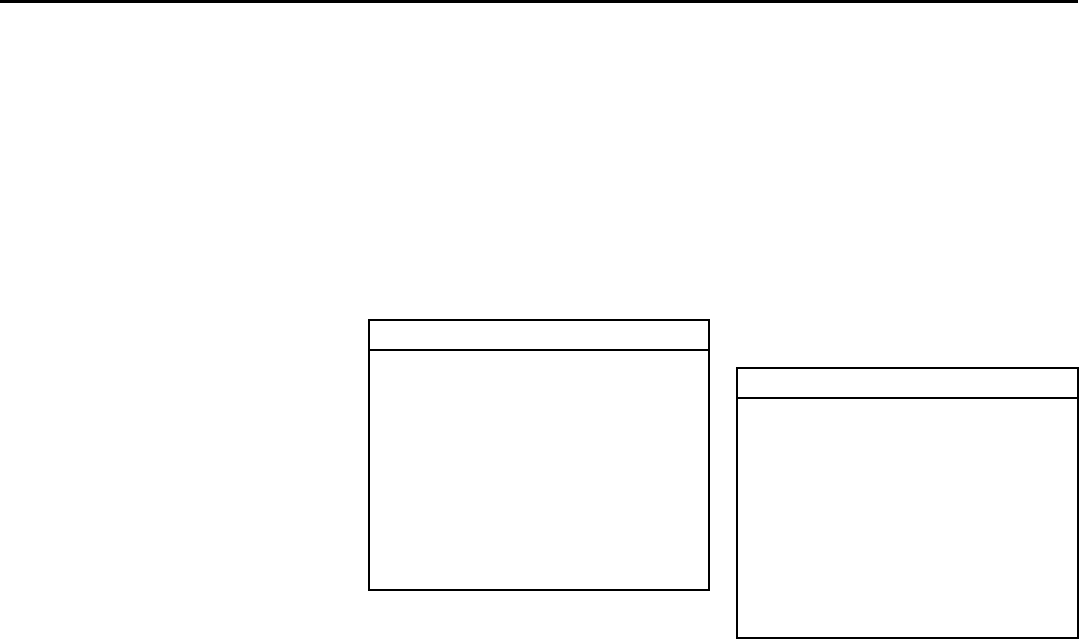
4-20
DRIVING YOUR VEHICLE
78J00-03E
Towing
Towing Your Vehicle
Consult your dealer or a professional tow-
ing service if you need to have your dis-
abled vehicle towed.
If you want to tow your vehicle behind
another vehicle for recreational purposes
(such as behind a motorhome), refer to
“Recreational Vehicle Towing” following.
Recreational Vehicle Towing
Recreational vehicle towing means towing
your vehicle behind another vehicle – such
as behind a motorhome. The two most
common types of recreational vehicle tow-
ing are known as “dinghy towing” (towing
your vehicle with all four wheels on the
ground) and “dolly towing” (towing your
vehicle with two wheels on the ground and
two wheels up on a device known as a
“dolly”).
With the proper preparation and equip-
ment, many vehicles can be towed in these
ways. See “Dinghy Towing” and “Dolly Tow-
ing”, following.
Here are some important things to con-
sider before you do recreational vehicle
towing:
• What’s the towing capacity of the towing
vehicle? Be sure you read the tow vehi-
cle manufacturer’s recommendations.
• How far will you tow? Some vehicles
have restrictions on how far and how
long they can tow.
• Do you have the proper towing equip-
ment? See your dealer or trailering pro-
fessional for additional advice and
equipment recommendations.
• Is your vehicle ready to be towed? Just
as you would prepare your vehicle for a
long trip, you’ll want to make sure your
vehicle is prepared to be towed. Refer to
“Before Leaving on a Long Trip” in this
section.
Dinghy Towing
If you have an all-wheel-drive vehicle or a
front-wheel-drive vehicle, it was not
designed to be towed with all of its wheels
on the ground. It can be towed with car
carrier equipment. If you have a front-
wheel-drive vehicle, it can be towed with its
two front wheels off the ground. See “Dolly
Towing” following.
Dolly Towing
If you have a front-wheel-drive vehicle, it
can be towed with the two front wheels off
the ground. To dolly tow your vehicle, do
the following:
1) Put the front wheels on a dolly.
2) Put the vehicle in PARK (P).
3) Set the parking brake and then remove
the key.
4) Clamp the steering wheel in a straight-
ahead position with a clamping device
designed for towing.
5) Release the parking brake.
If you have an all-wheel-drive vehicle, it
cannot be towed with any of its wheels on
CAUTION
Towing an all-wheel-drive vehicle
with all four wheels or even only two
wheels on the ground will damage
drivetrain or transmission compo-
nents. Towing a front-wheel-drive
vehicle with all four wheels on the
ground will damage drivetrain or
transmission components. Do not
tow an all-wheel-drive vehicle with
two or four wheels on the ground or a
front-wheel-drive vehicle if all four
wheels will be on the ground.
CAUTION
Towing an all-wheel-drive vehicle
with all four wheels or even only two
wheels on the ground will damage
drivetrain or transmission compo-
nents. Towing a front-wheel-drive
vehicle with all four wheels on the
ground will damage drivetrain or
transmission components. Do not
tow an all-wheel-drive vehicle with
two or four wheels on the ground or a
front-wheel-drive vehicle if all four
wheels will be on the ground.


















